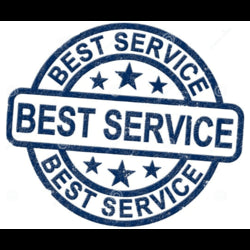
Metal buildings face unique cooling challenges during the summer months due to their excellent heat-conducting properties. While metal structures offer exceptional durability, affordability, and versatility, their ability to absorb and transfer heat can create uncomfortable indoor temperatures without proper cooling strategies. This comprehensive guide reveals proven ways to keep your metal building cool during the summer heat while maximizing energy efficiency and minimizing operational costs.
Understanding why metal buildings heat up quickly is essential for implementing effective cooling solutions. Metal conducts heat approximately 400 times faster than wood, making strategic cooling approaches crucial for maintaining comfortable indoor environments during scorching summer temperatures.
Essential Ways to Keep Your Metal Building Cool During the Summer Heat

Creating a comfortable environment in metal buildings during the summer requires a multifaceted approach that combines insulation, ventilation, reflective materials, and smart design choices. The most effective cooling strategies combine heat prevention, heat removal, and efficient climate control systems to achieve optimal cooling.
High-Performance Insulation for Summer Cooling
Quality insulation serves as the foundation for effective summer cooling in metal buildings. Without proper insulation, air conditioning systems must work significantly harder to maintain comfortable temperatures, leading to increased energy costs and reduced system efficiency.
Spray Foam Insulation: The premium choice for metal building cooling, spray foam provides superior air sealing and thermal resistance with R-values ranging from 6-7 per inch for closed-cell applications. This insulation type expands to fill gaps and cracks, preventing cool air loss and hot air infiltration.
Reflective Barrier Insulation: Designed specifically for metal buildings, reflective barriers reflect radiant heat away from the interior. These systems work particularly well when combined with traditional insulation materials, creating a comprehensive thermal barrier.
Fiberglass Blanket Insulation: A cost-effective option providing R-values between 2.9-3.8 per inch. When properly installed with vapor barriers, fiberglass insulation offers reliable thermal protection for budget-conscious projects.
Rigid Board Insulation: Made from polystyrene, polyurethane, or polyisocyanurate, rigid boards provide continuous insulation without thermal bridging. These boards are particularly effective when installed as part of a complete building envelope strategy.
Advanced Cool Roof Systems for Metal Buildings

Modern cool roof technology represents one of the most effective ways to keep your metal building cool during the summer heat. These systems can reduce roof surface temperatures by up to 50°F compared to traditional dark-colored roofing materials.
Cool Metal Roofing Technologies
Solar Reflective Coatings: Advanced coatings with high Solar Reflectance Index (SRI) ratings reflect sunlight away from the building rather than absorbing it. Cool metal roofs can achieve up to 25% reduction in cooling costs while maintaining durability and longevity.
Light-Colored Metal Roofing: Light-colored roof panels naturally reflect more solar energy than dark colors. White and light gray metal roofing can reflect 70% or more of solar radiation, significantly reducing heat absorption.
Thermal Emittance Properties: The best cool roof systems combine high solar reflectance with high thermal emittance, allowing the roof to release absorbed heat quickly through infrared radiation.
Cool Roof Rating Council Standards
Modern cool roofs meet stringent performance standards established by the Cool Roof Rating Council (CRRC). These standards ensure reliable performance and measurable energy savings for metal building applications.
Strategic Ventilation: Ways to Keep Your Metal Building Cool Naturally
Proper ventilation provides natural cooling while improving indoor air quality and reducing reliance on mechanical cooling systems. Well-designed ventilation systems can significantly reduce indoor temperatures during the summer months.
Natural Ventilation Strategies
Cross-Ventilation Design: Install openings on opposite sides of the building to create natural airflow patterns. This passive cooling method takes advantage of prevailing winds to move hot air out while drawing cooler air in.
Ridge Ventilation: Ridge vents at the roof peak allow hot air to escape naturally, taking advantage of the fact that hot air rises. This creates a natural chimney effect that continuously removes heated air from the building interior.
Eave Ventilation: Intake vents at the building's eaves provide fresh air entry points while working in conjunction with ridge vents to create effective air circulation patterns.
Mechanical Ventilation Solutions
Exhaust Fans: Strategically placed exhaust fans remove hot air quickly and efficiently. Variable-speed fans can adjust to outdoor conditions and indoor temperature requirements.
Whole Building Fans: Large-capacity fans designed for industrial applications can move substantial air volumes, creating significant cooling effects in large metal buildings.
Evaporative Cooling Systems: In dry climates, evaporative coolers provide effective cooling at lower energy costs than traditional air conditioning systems.
Energy-Efficient Ways to Keep Your Metal Building Cool with Smart Design
Building design choices significantly impact summer cooling performance and long-term energy efficiency. Smart design decisions made during construction or renovation can provide substantial cooling benefits for decades.
Window and Door Optimization
Reflective Window Films: High-performance window films can reject up to 80% of solar heat while maintaining visibility and natural lighting. These films are particularly effective on south and west-facing windows.
Energy-Efficient Windows: Double or triple-pane windows with low-emissivity coatings significantly reduce heat transfer. Proper window selection can reduce cooling loads by 10-15% in metal buildings.
Strategic Shading: Awnings, overhangs, and canopies reduce direct solar heat gain through windows and doors. Adjustable shading systems allow optimization for different seasons and sun angles.
Lighting and Electrical Efficiency
LED Lighting Systems: LED lights produce significantly less heat than traditional incandescent or fluorescent lighting, reducing internal heat loads. This technology can reduce lighting-related cooling loads by up to 75%.
Smart Controls: Automated lighting controls ensure lights operate only when needed, minimizing unnecessary heat generation during hot summer days.
Electrical Load Management: High-efficiency equipment and motors generate less waste heat, contributing to overall cooling efficiency.
Landscaping and External Ways to Keep Your Metal Building Cool
Strategic landscaping and external modifications provide natural cooling benefits while enhancing the building's appearance and functionality.
Natural Shading Solutions
Tree Placement: Deciduous trees on the south and west sides provide summer shading while allowing winter sun penetration. Proper tree selection and placement can reduce cooling costs by 15-20%.
Shrub and Vine Systems: Low-growing vegetation around the building perimeter helps cool surrounding air through evapotranspiration while providing additional shading for walls.
Mulching Strategies: Organic mulch around the building reflects less heat than bare soil or concrete, contributing to cooler ambient temperatures.
Hardscape Modifications
Reflective Surfacing: Light-colored concrete or pavement around the building reflects solar energy rather than absorbing and re-radiating it as heat.
Permeable Paving: Allows water infiltration and reduces heat island effects compared to solid concrete or asphalt surfaces.
Strategic Grading: Proper site grading directs hot air away from the building while encouraging cool air circulation.
Advanced HVAC Solutions: Modern Ways to Keep Your Metal Building Cool
When passive cooling strategies aren't sufficient, modern HVAC technologies provide efficient mechanical cooling while minimizing energy consumption and operational costs.
High-Efficiency Cooling Systems
Variable Refrigerant Flow (VRF) Systems: These advanced systems provide precise temperature control with exceptional energy efficiency. VRF systems can achieve SEER ratings of 20+ while providing individual zone control.
Ductless Mini-Split Systems: Ideal for metal buildings with specific cooling zones, mini-splits offer high efficiency and flexible installation options without extensive ductwork requirements.
Evaporative Cooling: In arid climates, evaporative coolers provide substantial cooling at 25-50% of traditional air conditioning operating costs.
Smart HVAC Controls
Programmable Thermostats: Advanced controls can reduce cooling costs by 10-15% through optimized temperature setbacks and automated scheduling.
Occupancy Sensors: Automatic adjustment based on building occupancy ensures cooling operates only when needed, maximizing efficiency.
Integration Systems: Smart building controls integrate cooling, lighting, and ventilation for optimal energy performance.
Building Envelope Sealing: Critical Ways to Keep Your Metal Building Cool
Proper air sealing prevents cool air loss while blocking hot air infiltration, maximizing the effectiveness of cooling systems and reducing energy waste.
Air Leak Identification and Sealing
Thermal Imaging Assessment: Professional thermal imaging identifies air leaks and thermal bridging issues that compromise cooling efficiency.
Weatherstripping Installation: High-quality weatherstripping around doors, windows, and other openings prevents air exchange between indoor and outdoor environments.
Sealant Application: Appropriate sealants for different building materials and applications ensure long-lasting air sealing performance.
Vapor Barrier Systems
Moisture Control: Proper vapor barriers prevent condensation issues while maintaining the thermal performance of insulation systems.
Air Barrier Integration: Continuous air barriers prevent uncontrolled air movement that can compromise cooling efficiency.
Choosing the Right Duramax Metal Building for Summer Comfort
When selecting a metal building optimized for summer cooling, Duramax Sheds Direct offers structures engineered for excellent thermal performance and cooling system integration. These buildings provide the foundation for implementing effective cooling strategies.
The Duramax Imperial Garage series features robust construction designed to accommodate insulation and cooling systems efficiently. These structures provide excellent potential for summer comfort when properly equipped with cooling technologies.
For substantial workshop or storage applications, the Duramax 12x20 metal garage offers ample space while maintaining cooling efficiency through proper system design and installation.
Compact applications benefit from efficient options like the Duramax Sidemate Shed 00625 and Duramax Sidemate 4x10, both designed for optimal space utilization and cooling efficiency.
Cost-Effective Summer Cooling Strategies
Implementing cooling solutions requires balancing initial investment with long-term energy savings and comfort benefits. Strategic planning ensures maximum return on cooling system investments.
Budget-Friendly Solutions
Immediate Impact Options:
-
Reflective roof coatings
-
Weatherstripping and sealing
-
LED lighting conversion
-
Basic insulation improvements
Medium Investment Strategies:
-
Cool roof system installation
-
Energy-efficient windows
-
Ventilation system upgrades
-
Smart thermostat installation
Long-Term Value Investments:
-
Comprehensive insulation systems
-
High-efficiency HVAC equipment
-
Solar integration
-
Building automation systems
Return on Investment Analysis
Cool roof systems typically pay for themselves within 3-7 years through energy savings. High-performance insulation can reduce cooling costs by 30-50%, providing substantial long-term savings that justify initial investment costs.
Maintenance and Optimization
Regular maintenance ensures cooling systems operate at peak efficiency throughout the summer months while extending equipment lifespan and maintaining performance.
Seasonal Maintenance Requirements
Pre-Summer Preparation:
-
Clean or replace air filters
-
Inspect and clean cooling coils
-
Test thermostat calibration
-
Verify proper refrigerant levels
During Summer Operation:
-
Monthly filter inspections
-
Monitor system performance
-
Check for unusual noises or odors
-
Document energy consumption patterns
End-of-Season Assessment:
-
Professional system inspection
-
Address issues discovered during operation
-
Plan improvements for next cooling season
Advanced Technologies for Metal Building Cooling
Emerging technologies offer new opportunities for efficient cooling while reducing environmental impact and operational costs.
Smart Building Integration
IoT Sensors: Internet-connected sensors monitor temperature, humidity, and occupancy to optimize cooling system operation automatically.
Predictive Controls: Advanced algorithms predict cooling needs based on weather forecasts, occupancy patterns, and historical data.
Energy Management Systems: Comprehensive systems integrate cooling with other building operations for maximum efficiency.
Renewable Energy Integration
Solar-Powered Cooling: Photovoltaic systems can offset cooling energy consumption while taking advantage of peak solar availability during hot summer days.
Thermal Storage: Advanced systems store cooling capacity during off-peak hours for use during peak demand periods.
Conclusion

Successfully keeping your metal building cool during summer heat requires a comprehensive approach combining passive cooling strategies, efficient equipment, and smart operational practices. The most effective solutions address heat prevention through insulation and reflective materials, heat removal through ventilation and efficient cooling systems, and optimized controls that minimize energy consumption.
By implementing these proven ways to keep your metal building cool during the summer heat, you can maintain comfortable indoor environments while controlling energy costs and maximizing long-term value. Whether retrofitting an existing structure or planning a new metal building project, focusing on cooling efficiency from the beginning ensures optimal performance for years to come.
The key to summer comfort lies in treating your metal building as a complete system where insulation, ventilation, reflective materials, and cooling equipment work together to create an efficient thermal environment. Investing in quality cooling solutions provides both immediate comfort benefits and substantial long-term energy savings.
Frequently Asked Questions
What is the most cost-effective way to keep a metal building cool in summer?
The most cost-effective approach combines reflective roof coatings with proper insulation and strategic ventilation. Cool roof systems can reduce surface temperatures by up to 50°F while quality insulation prevents heat transfer. These solutions typically provide the best return on investment through reduced cooling costs.
How much can cool roofing reduce cooling costs in metal buildings?
Cool metal roofing systems can reduce cooling costs by 25-40% compared to traditional dark-colored roofs. The exact savings depend on climate, building size, and existing insulation levels. In hot, sunny climates, the savings are most substantial and provide quick payback on investment.
Should I use spray foam insulation in my metal building for summer cooling?
Spray foam insulation is highly effective for metal building cooling because it provides superior air sealing and high R-values per inch. While more expensive than alternatives, spray foam typically provides the best long-term value through energy savings and improved comfort, especially in hot climates.
How important is ventilation for keeping metal buildings cool?
Proper ventilation is crucial for metal building cooling, as it removes hot air naturally and reduces reliance on mechanical cooling systems. Cross-ventilation and ridge venting can significantly reduce indoor temperatures while improving air quality. Combining natural and mechanical ventilation provides optimal results.
What color should I paint my metal building to keep it cool?
Light colors, particularly white and light gray, reflect the most solar energy and keep buildings coolest. White roofs can reflect 70-80% of solar radiation compared to only 20% for dark colors. Even switching from dark to light colors can reduce roof temperatures by 40-50°F on hot summer days.







